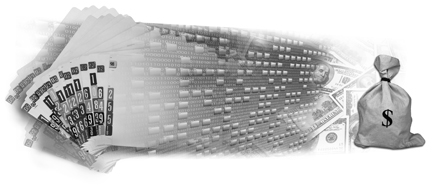Mid-Atlantic Health Law TOPICS

Payments (and Penalties) for Electronic Health Records
HITECH, which is part of the American Recovery and Reinvestment Act of 2009, establishes a program of incentive payments to eligible professionals and eligible hospitals that (1) participate in the Medicare or Medicaid programs, and (2) meaningfully use certified electronic health record technology (EHR). (EHR is certified if it meets the standards of the Office of the National Coordinator for Health Information Technology.)
HITECH also establishes penalties for not meaningfully using certified EHR by 2015.
The Centers for Medicare and Medicaid Services (CMS) recently finalized rules implementing the HITECH incentives.
Accordingly, it is important for health care providers to know (A) who is eligible for an incentive; (B) what constitutes meaningful use of EHR, (C) how much money is available under the Medicare rules, and (D) how much money is available under the Medicaid rules.

A. Who is Eligible?
Subject to the exclusion of hospital based physicians, discussed below, Medicare incentive payments are generally available to any physician, including doctors of medicine or osteopathy, dentists, dental surgeons, podiatrists, optometrists and chiropractors, who demonstrates meaningful use of certified EHR for a payment year.
Medicare incentive payments are also available to any hospital that is subject to the prospective payment system and demonstrates meaningful use of certified EHR. Maryland hospitals operate under a Medicare waiver, and are, therefore, not subject to the prospective payment system. However, last year, Maryland enacted a law that requires the Health Services Cost Review Commission (HSCRC), the agency that sets rates for Maryland hospitals, to assure that Maryland hospitals receive the HITECH incentive payments.
The Medicaid incentives, subject to the exclusion of hospital based physicians, discussed below, are generally available to physicians, dentists, certified nurse-midwives, nurse practitioners, and physician assistants practicing either in a federally qualified health center (FQHC) or a rural health clinic (RHC) that is led by a physician assistant, provided that any such person demonstrates meaningful use of certified EHR, or for the first year, the adoption, implementation or upgrading to certified EHR.
To qualify for a Medicaid incentive payment, for each year for which the eligible professional seeks an incentive payment, the eligible professional must meet one of the following criteria: (1) have a minimum 30% Medicaid patient volume; (2) be a pediatrician and have a minimum 20% Medicaid patient volume; or (3) practice predominantly in a FQHC or RHC and have a minimum 30% patient volume of needy individuals.
Medicaid incentive payments are generally available to acute care hospitals that have at least 10% Medicaid patient volume for each year for which the hospital seeks an incentive payment, and children's hospitals, provided the hospital can demonstrate meaningful use of certified EHR, or for the first year, the adoption, implementation or upgrading to certified EHR.
Hospital based physicians are not eligible for either the Medicare or Medicaid incentive programs. In this context, a hospital based physician is someone who furnishes 90% or more of his or her covered professional services in a hospital setting in the year preceding the payment year.
For eligible professionals, the Medicare and Medicaid incentive payments are tied to the individual eligible professional, and not to his place of practice. However, the eligible professional may assign his or her right to the incentive payment to his or her group practice or employer.
B. What is Meaningful Use?
CMS has identified certain criteria to demonstrate meaningful use. The initial criteria are referred to as ''Stage 1'' criteria. Two additional updates, referred to as Stage 2 and Stage 3, are likely to be made by the end of 2011 and 2013. Eligible professionals and hospitals will have to meet the more stringent requirements of Stage 2 and Stage 3 to continue receiving incentive payments.
For Stage 1, to qualify as a meaningful EHR user, an eligible professional or hospital must successfully meet each objective in a "core" set of objectives, as well as 5 out of 10 objectives in a "menu" of objectives. The core objectives are as follows:
1. Use of CPOE (computerized provider order entry) for medication orders;
2. Drug to drug and drug allergy interaction checks;
3. E-Prescribing (eligible professionals only);
4. Recordation of demographics and smoking status, and changes in vital signs;
5. An up-to-date problem list;
6. Active medication list and medication allergy lists;
7. One clinical decision support rule;
8. CQM as specified by the Secretary;
9. Providing patients with an electronic copy of their health information (eligible professionals and hospitals) and discharge instructions (hospitals only);
10. Providing clinical summaries for patients for each office visit (eligible professionals only); and
11. Protecting electronic health information.
The "menu" set of objectives include items such as: drug formulary checks; incorporating clinical lab-test results into EHR data; sending patient reminders; providing patients with timely electronic access to their health information within 4 business days of the information being available to the eligible professional; sharing of EHR information between providers when appropriate; using certified EHR to identify patient-specific education resources and providing those resources to the patient if appropriate; and the capability to submit electronic data to registries and public health agencies.
Many of the objectives in both the core and menu sets have measures based on a percentage of patient encounters - generally at 50-80%. For example, with respect to maintaining an active medication list, the measurement is that at least 80% of the patients for which there is an EHR have at least one entry with respect to medications prescribed, or an entry that no medication has been prescribed.
In addition, to be a meaningful EHR user, an eligible professional must have 50% or more of its patient encounters during the EHR reporting period at a practice/location or practices/ locations equipped with certified EHR.
C. Medicare Incentive Program
Although eligible professionals may choose to participate in either the Medicare incentive program or the Medicaid incentive program, eligible hospitals may participate in both. While there are many similarities in the two programs, there are also certain key differences.
Incentive payments under the Medicare program begin in calendar year 2011 for eligible professionals, and on October 1, 2011 for eligible hospitals, and end in 2016. Subject to the maximums discussed below, eligible professionals that demonstrate meaningful use of EHR may receive an amount up to 75% of the estimated allowed charges for Medicare covered professional services furnished by the eligible professional during the payment year.
The maximum incentives that an eligible professional may receive, however, for each year are as follows: $15,000 for the first payment year, (or, if the first payment year for the qualifying eligible professional is 2011 or 2012, $18,000); $12,000 for the second payment year; $8,000 for the third payment year; $4,000 for the fourth payment year; $2,000 for the fifth payment year; and nothing for any succeeding payment year. If an eligible professional does not become a meaningful user until after 2014, no incentive payments are available.
For eligible hospitals, the incentive payments consist of an initial amount, multiplied by the Medicare share factor (generally the percentage of Medicare-covered inpatient days to total inpatient days), and a transition factor, which reduces the incentive payments for each consecutive year (from 3/4 of the otherwise allowed payment, down to 1/4 of the otherwise allowed payment), depending on what year the hospital first becomes a meaningful user.
The initial amount is determined based on the number of acute care inpatient Medicare discharges, and ranges from $2,000,000 for 1,149 discharges or less, to $6,370,200 for hospitals with more than 23,000 Medicare acute care inpatient discharges.
Hospitals that become meaningful users in fiscal year 2011, 2012 or 2013 are allowed up to four years of incentive payments. This is reduced to three years of incentive payments or two years of incentive payments if the hospital becomes a meaningful user in 2014 or 2015, respectively.
Once an eligible professional or hospital receives the first incentive payment, then the eligible professional or hospital must demonstrate meaningful use of certified EHR for each subsequent payment year to receive an incentive payment for that year.
To qualify for an initial incentive payment, the eligible professional or hospital need only demonstrate meaningful use for 3 consecutive months of the first payment year. For subsequent years, meaningful use must be demonstrated for the entire year.
D. Medicaid Incentive Program
Incentive payments under the Medicaid program also begin in 2011. Not only does the Medicaid program only require adoption, implementation or upgrading to certified EHR in the first year, but an eligible professional or hospital also does not "lose" incentive payments in subsequent years that the eligible professional or hospital is not a meaningful user - the incentive can be carried over.
The maximum Medicaid incentive payment for the first payment year is limited to the lower of 85% of the net average allowable cost of the certified EHR, or $21,250. For subsequent payment years, payments may not exceed the lower of 85% of the maintenance and operation cost of the EHR, or $8,500. An eligible professional may not begin to receive incentive payments any later than 2016.
Payments after the first payment year may continue for a maximum of 5 years, and no payments will be made after 2021. The maximum incentive over a 6-year period may not exceed $63,750. Incentive payments to pediatricians are generally limited to two thirds of the otherwise allowable incentive payment.
An eligible professional may change from participating in the Medicare to the Medicaid incentive program, or vice versa, one time, but only for a payment year before 2015.
Subject to certain exceptions and limitations, the Medicaid incentive payments that a hospital may receive are calculated based on an "overall amount" multiplied by the Medicaid share. The overall amount is $2,000,000, increased by $200 per Medicaid discharge for discharges over 1,150 and under 23,000, and multiplied by a transition factor similar to the Medicare incentive payment.
The incentive payments are provided over a minimum of a 3-year period and maximum of a 6-year period. After September 30, 2017, a hospital may not begin receiving incentive payments, and may not continue to receive an incentive payment unless the hospital received an incentive payment in the prior year.
E. Penalties
Eligible professionals who cannot demonstrate that they are meaningful users of certified EHR by January 1, 2015, will receive an adjustment to their Medicare fee schedule of 99% for 2015, 98% for 2016, and 97% for 2017 and each subsequent year.
Hospitals outside of Maryland that are not meaningful users of certified EHR on or after October 1, 2014, will receive a reduced annual payment update for their Medicare inpatient hospital services. For Maryland hospitals, the 2009 Maryland law discussed above also requires the HSCRC to change hospital rates to comply with HITECH's penalty provisions.
F. Other Maryland EHR Initiatives
In 2009, Maryland, the District of Columbia and 3 other states also became part of a CMS demonstration project to encourage small to medium sized primary care physician practices to use EHR. Over 200 practitioners in Maryland and DC were enrolled in the five year project which provides financial incentives for the adoption of EHR. Participation in the demonstration project does not preclude a provider from obtaining incentive payments under HITECH.
In addition, the law that requires the HSCRC to implement HITECH also requires the Maryland Health Care Commission to promulgate regulations requiring local insurers to give monetary incentives to providers that adopt and use EHR. These incentives must take into account Medicare or Medicaid incentives, as well as any grants or loans that are available to health care providers from the federal government.